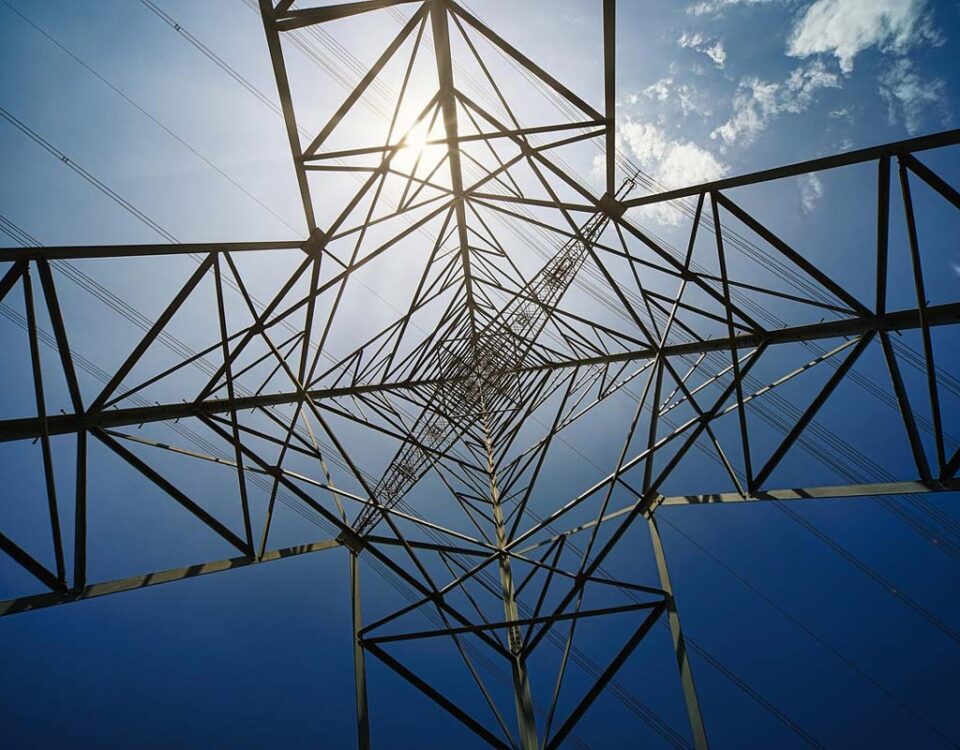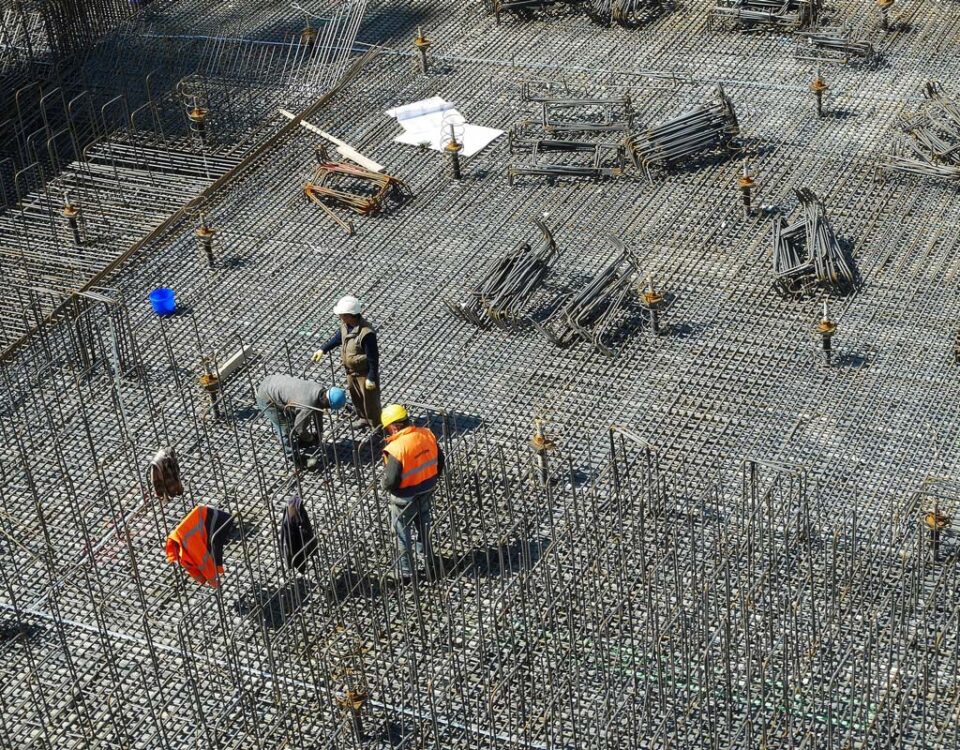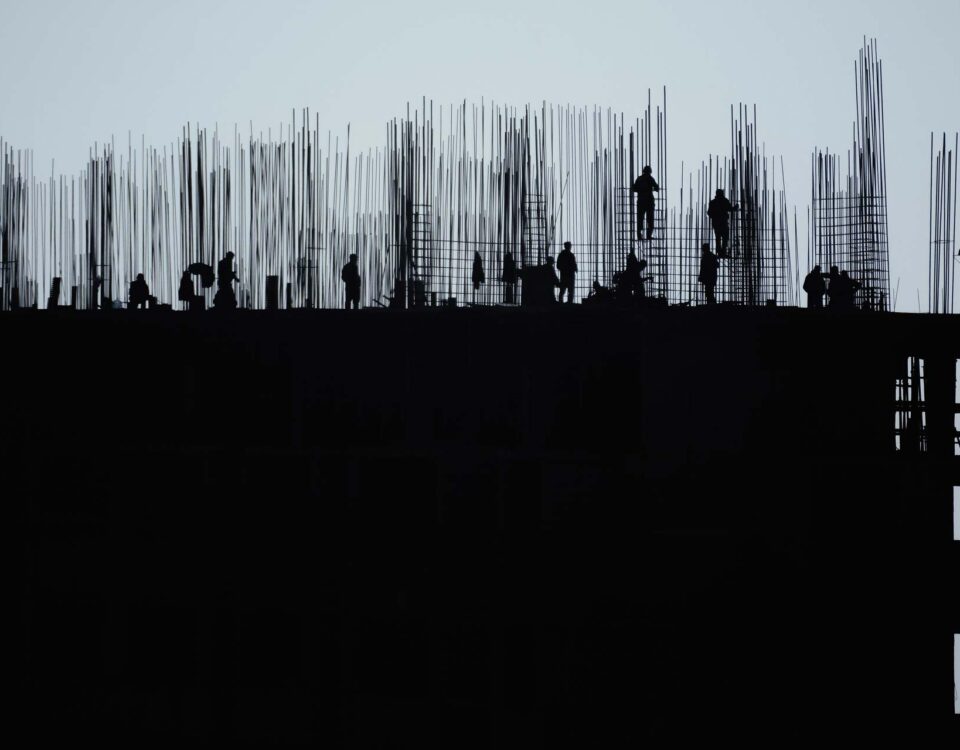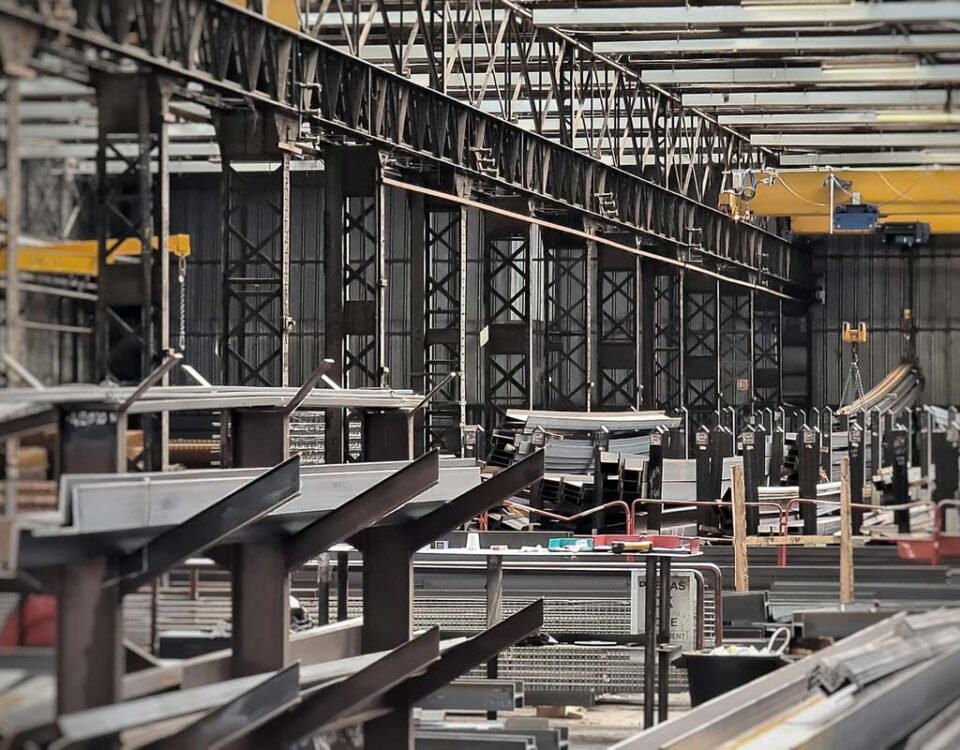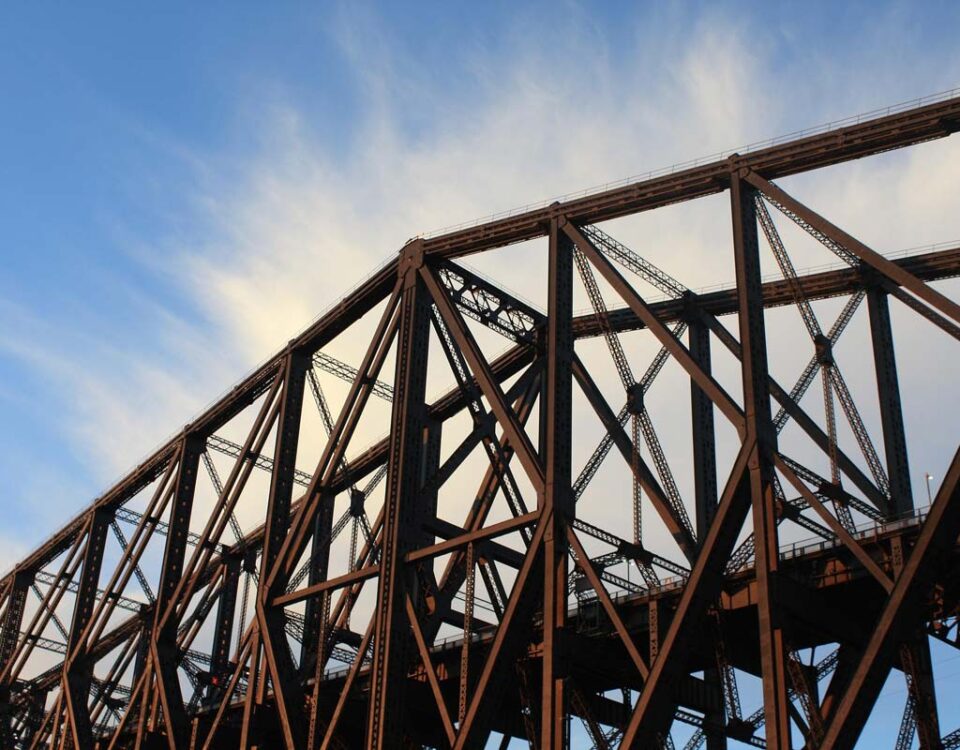Steel Structure – A Core System in Modern Construction
Steel skeletons are among the most widely used structural systems in modern building construction, valued for their high strength, flexibility, and fast assembly, which have secured them a prominent place across various industries. This system is primarily built using steel sections, engineered and assembled as columns, beams, braces, and other structural members.
Compared to traditional systems such as reinforced concrete frames, steel structures significantly reduce the overall weight of the building and allow for larger spans, more floors, and greater architectural adaptability.
Based on connection types and member configuration, steel skeletons are generally classified into two main categories:
- Welded Steel Structures – Common in traditional or small‑scale projects, particularly where execution speed is not the top priority.
- Bolted Steel Structures – Preferred for large‑scale industrial, commercial, and high‑rise projects due to superior quality control, prefabrication possibilities, and ease of transportation and installation.
From a design perspective, steel frames may be executed as simple frames (moment‑resistant structures), special moment frames, intermediate moment frames, or braced frames (especially in seismic zones).
Main Components
- Columns – Vertical load‑bearing elements that transfer structural and imposed loads to the foundation.
- Primary Beams – Carry roof or floor loads and transfer them to columns.
- Secondary Beams – Provide additional support and reduce spacing between primary beams.
- Braces – Often arranged in X‑ or V‑forms, they enhance lateral stability and resist seismic or wind forces.
- Connections – Critical structural points that must meet engineering standards to ensure durability and safety.
Applications
Steel structures have broad applications, including residential and office buildings, industrial and sports halls, high‑rise towers, bridges, warehouses, shopping centers, and airport terminals. They are also widely adopted in infrastructure projects and temporary structures due to their fast construction speed, the ability to dismantle and reassemble components, and the high recyclability of materials.
Unique properties—such as design flexibility, future expandability, long lifespan, and capacity to support heavy loads—make steel frames the top choice for engineers and clients in major projects.
Ultimately, steel structures not only elevate quality, durability, and efficiency, but also open doors to modern and complex architectural designs.








